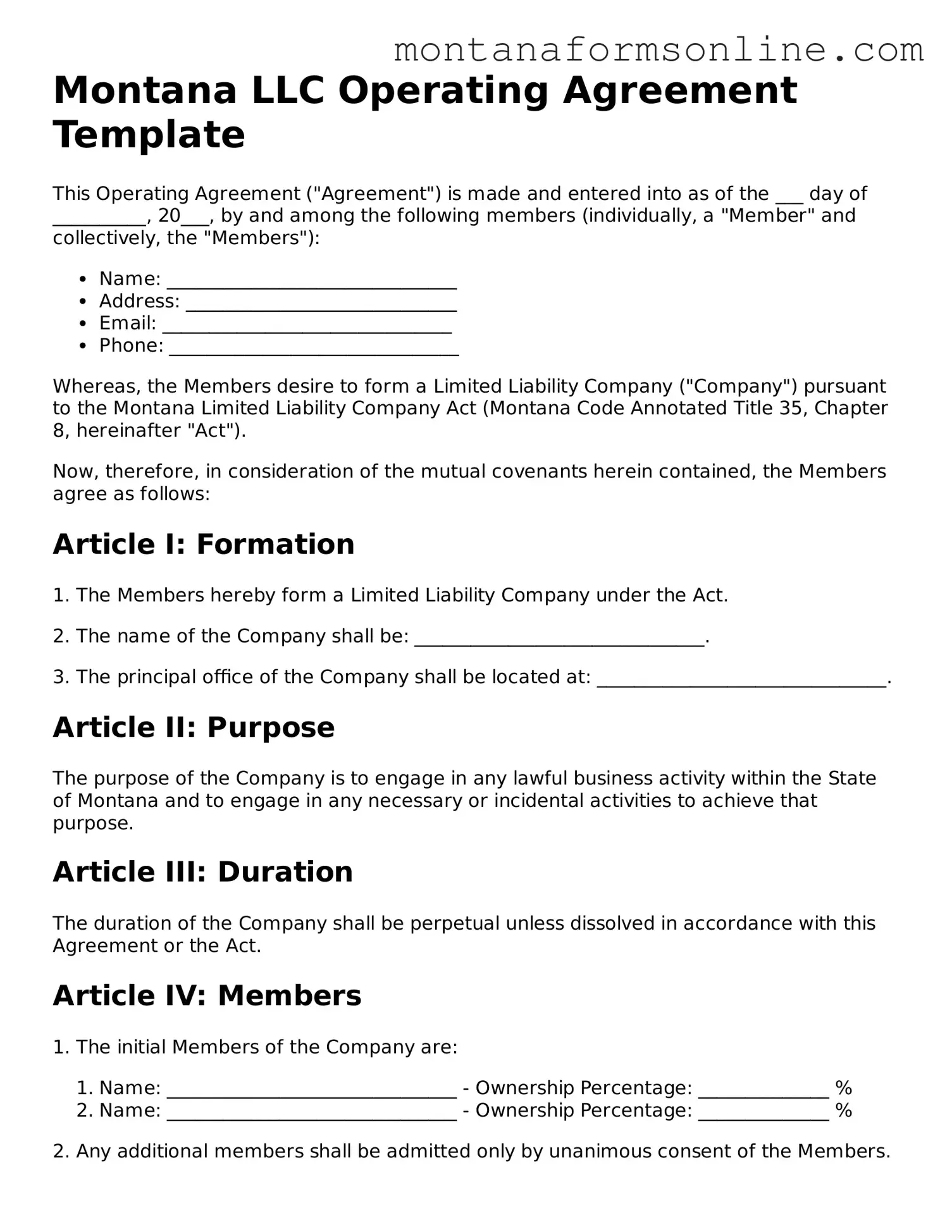Montana LLC Operating Agreement Template
This Operating Agreement ("Agreement") is made and entered into as of the ___ day of __________, 20___, by and among the following members (individually, a "Member" and collectively, the "Members"):
- Name: _______________________________
- Address: _____________________________
- Email: _______________________________
- Phone: _______________________________
Whereas, the Members desire to form a Limited Liability Company ("Company") pursuant to the Montana Limited Liability Company Act (Montana Code Annotated Title 35, Chapter 8, hereinafter "Act").
Now, therefore, in consideration of the mutual covenants herein contained, the Members agree as follows:
Article I: Formation
1. The Members hereby form a Limited Liability Company under the Act.
2. The name of the Company shall be: _______________________________.
3. The principal office of the Company shall be located at: _______________________________.
Article II: Purpose
The purpose of the Company is to engage in any lawful business activity within the State of Montana and to engage in any necessary or incidental activities to achieve that purpose.
Article III: Duration
The duration of the Company shall be perpetual unless dissolved in accordance with this Agreement or the Act.
Article IV: Members
1. The initial Members of the Company are:
- Name: _______________________________ - Ownership Percentage: ______________ %
- Name: _______________________________ - Ownership Percentage: ______________ %
2. Any additional members shall be admitted only by unanimous consent of the Members.
Article V: Management
1. The Company shall be managed by its Members. Each Member shall have the authority to make decisions for the Company.
2. Major decisions affecting the Company shall require the approval of a majority of the Members.
Article VI: Contributions
1. Each Member agrees to contribute the following capital to the Company:
- Name: _______________________________ - Contribution Amount: _______________
- Name: _______________________________ - Contribution Amount: _______________
2. Additional contributions may be made as agreed by the Members.
Article VII: Profits and Losses
Profits and losses shall be allocated to the Members in proportion to their respective ownership percentages in the Company.
Article VIII: Distributions
Distributions shall be made to Members at such times and in such amounts as determined by the Members.
Article IX: Indemnification
The Company shall indemnify and hold harmless each Member from any and all claims, losses, or liabilities incurred as a result of their role in the Company, to the fullest extent permitted under the law.
Article X: Amendments
This Agreement may be amended only by a written document signed by all Members.
Article XI: Governing Law
This Agreement shall be governed by and construed in accordance with the laws of the State of Montana.
In witness whereof, the Members have executed this Operating Agreement as of the date first above written.
Member Signature: ________________________ Date: ____________
Member Signature: ________________________ Date: ____________
